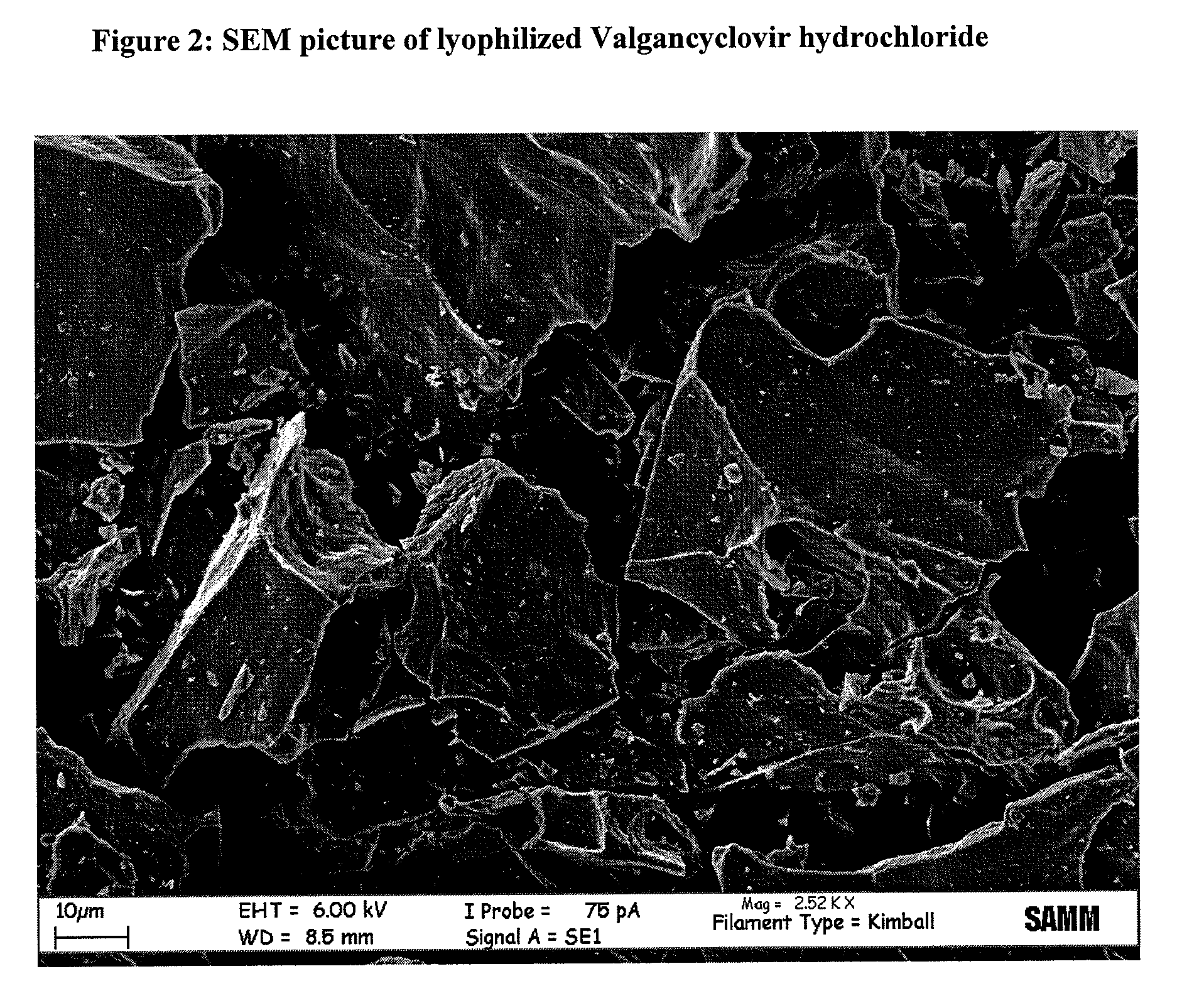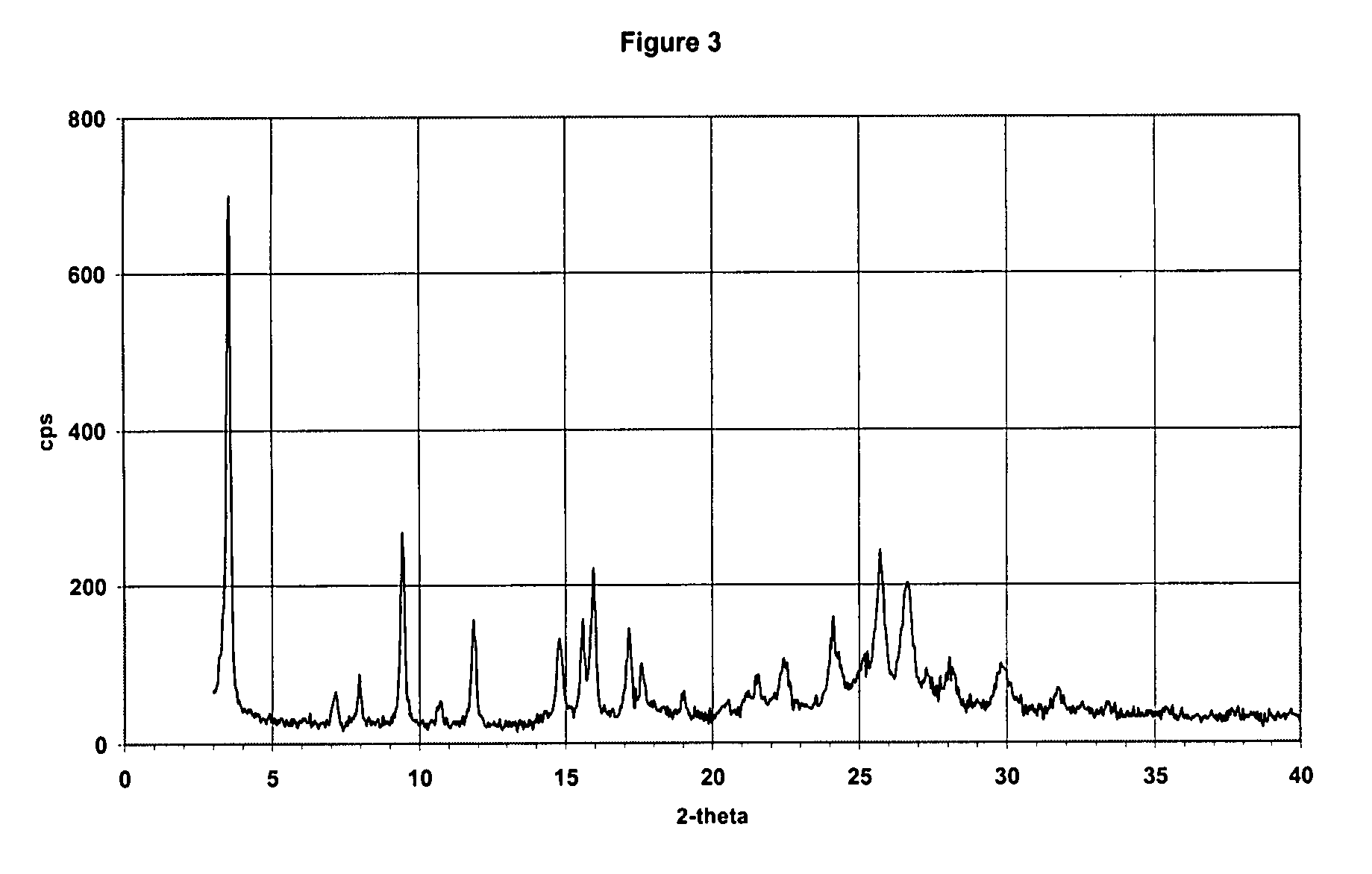Process for the preparation and purification of valgancyclovir hydrochloride
a technology of valgancyclovir and hydrochloride, which is applied in the field of process for the preparation of valgancyclovir hydrochloride, can solve the problems of affecting yield, purity of compound and cost, negatively affecting yield and operability of process, and increasing synthetic efficiency
- Summary
- Abstract
- Description
- Claims
- Application Information
AI Technical Summary
Benefits of technology
Problems solved by technology
Method used
Image
Examples
example 1
[0068]L-Valine (10 g), tetramethylammonium hydroxide (25% methanolic solution, 34 g) and 100 ml of ethanol were charged in a 500 ml flask. The mixture was stirred at room temperature till complete solution and about 50 ml ethanol were distilled off. To the resulting mixture, 20 g of 5-chloro-2-hydroxy benzophenone and ethanol (175 ml) were added. The suspension was stirred at room temperature for a few days till complete solution, and the solvent was removed in vacuo. The residue was taken-up with water (150 ml) and extracted with ethyl acetate (3×100 ml). The organic layer was discarded and fresh ethyl acetate (50 ml) was added. The mixture was cooled to about 10° C. and a 20% solution of citric acid in water (38.5 g) was added slowly till pH=5.5. The organic layer was separated and the water phase was extracted with ethyl acetate (3×50 ml). The organic phases were pooled and washed with water, dried over sodium sulphate and evaporated in vacuo to yield the crude title compound as ...
example 2
L-valine 2-[(2-amino-1,6-dihydro-6-oxo-9H-purin-9-yl)methoxy]-3-(acettyloxy)propyl ester hydrochloride (Compound 9)
[0069]In a three necks bottom flask the compound of the Example 1 (10 g) was dissolved in DMF (36 ml). The solution is cooled to 0-5° C. and HOBT (4.6 g) and a solution of DCC (6.19 g) in DMF (14 ml) were added. Additional DCC in DMF was added after one hour, and after an additional half a hour stirring, monoacetoxygancyclovir (6 g), and DMAP (0.4 g) were added. Upon reaction completion, the suspension was filtered, quenched with a solution of methanol / water / HCl 2N, filtered, washed on the filter and dried. 4 g of the title compound were obtained.
example 3
L-valine, 2-[(2-amino-1,6-dihydro-6-oxo-9H-purin-9-yl)methoxy]-3-hydroxypropyl ester, hydrochloride
[0070]2 g of the compound obtained from Example 2 was dissolved in methanol / water, 2N HCl was added and the resulting solution was kept at 35° C. for about 24 hors. The solution was cooled to room temperature, the pH of the solution was adjusted to 3-4 by addition of triethylamine, then concentrated to a small volume and diluted with isopropanol. The resulting precipitate is filtered to afford 1.5 g of crude valgancyclovir hydrochloride.
[0071]The purification of crude valgancyclovir hydrochloride obtained above was performed by dissolving crude valgancyclovir hydrochloride in water, cooling the solution at 5-10° C. and acidifying. The precipitate was filtered-off and the aqueous solution was washed with ethyl acetate, and then treated with isopropanol in two separate additions. The precipitate was filtered and washed on the filter. The wet solid was then taken up in water and charcoal ...
PUM
| Property | Measurement | Unit |
|---|---|---|
| temperatures | aaaaa | aaaaa |
| temperatures | aaaaa | aaaaa |
| temperatures | aaaaa | aaaaa |
Abstract
Description
Claims
Application Information
 Login to View More
Login to View More - R&D
- Intellectual Property
- Life Sciences
- Materials
- Tech Scout
- Unparalleled Data Quality
- Higher Quality Content
- 60% Fewer Hallucinations
Browse by: Latest US Patents, China's latest patents, Technical Efficacy Thesaurus, Application Domain, Technology Topic, Popular Technical Reports.
© 2025 PatSnap. All rights reserved.Legal|Privacy policy|Modern Slavery Act Transparency Statement|Sitemap|About US| Contact US: help@patsnap.com



